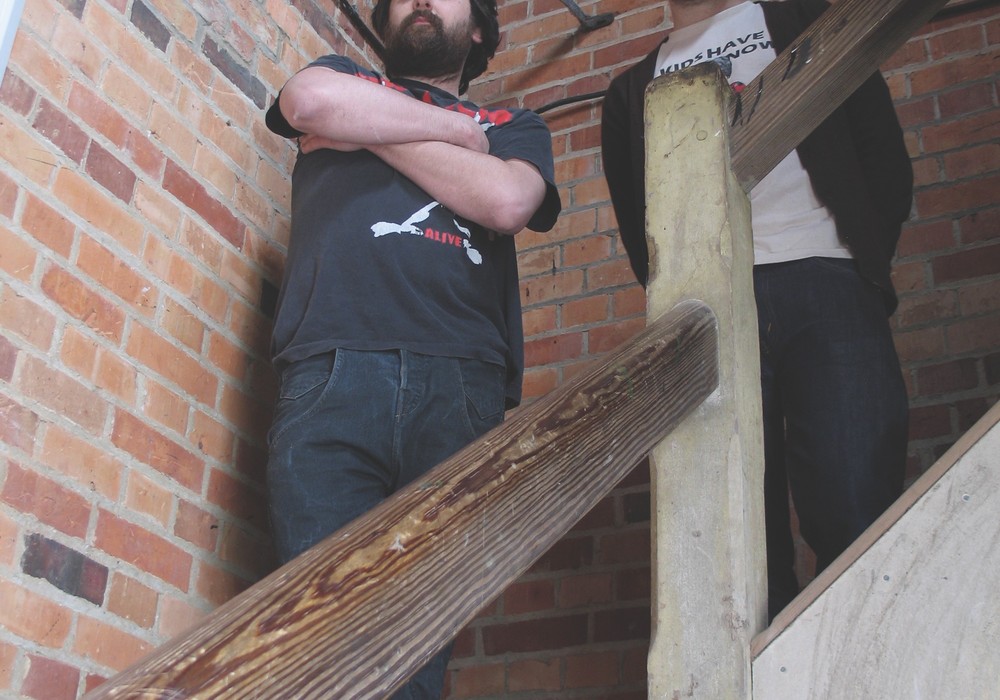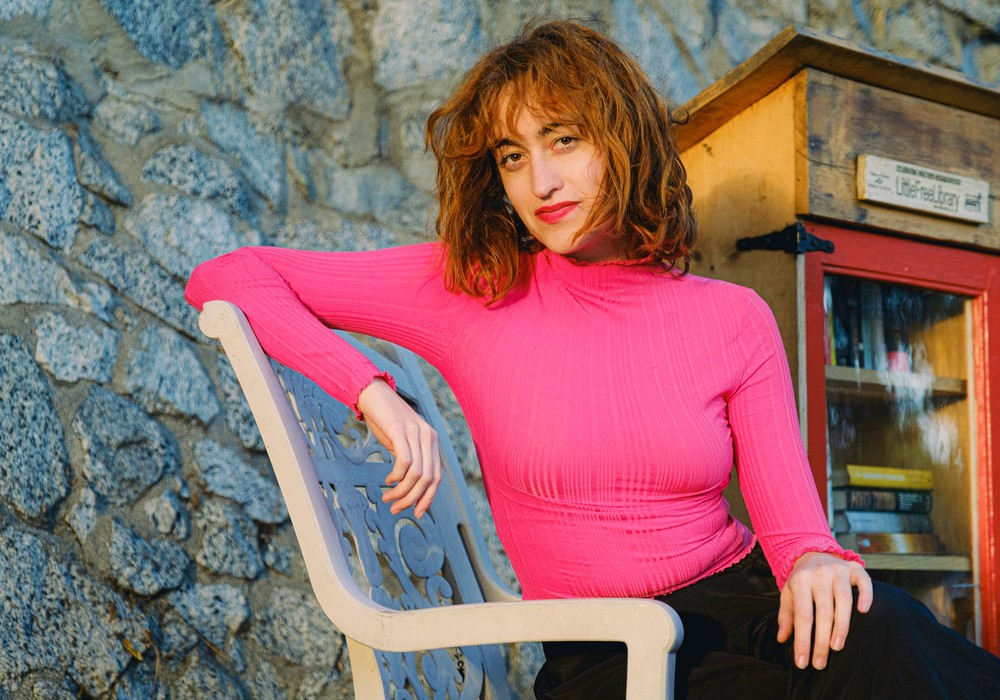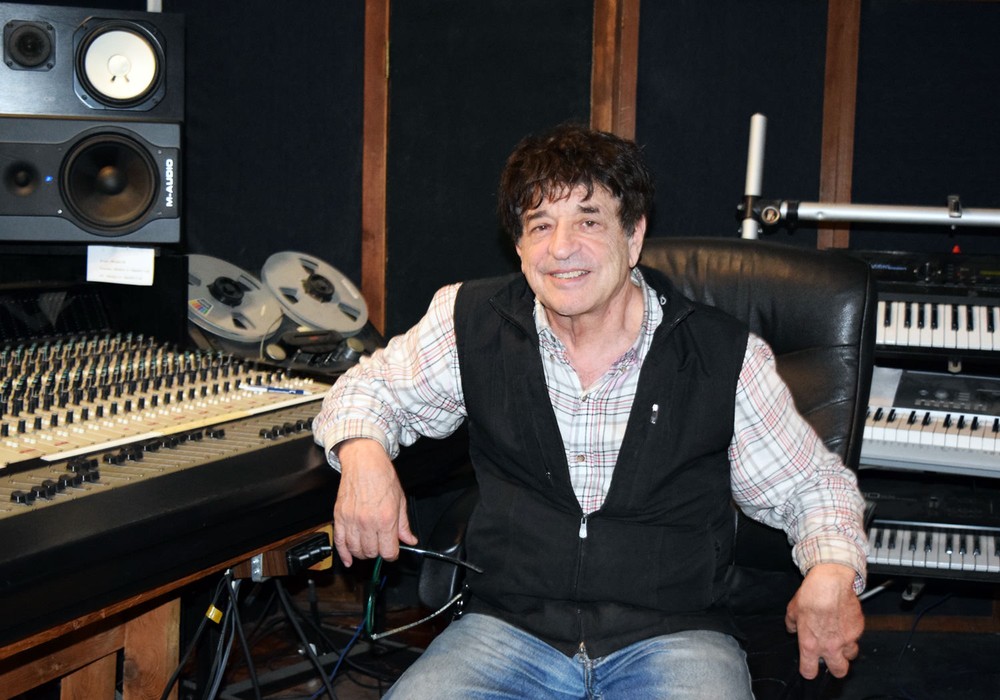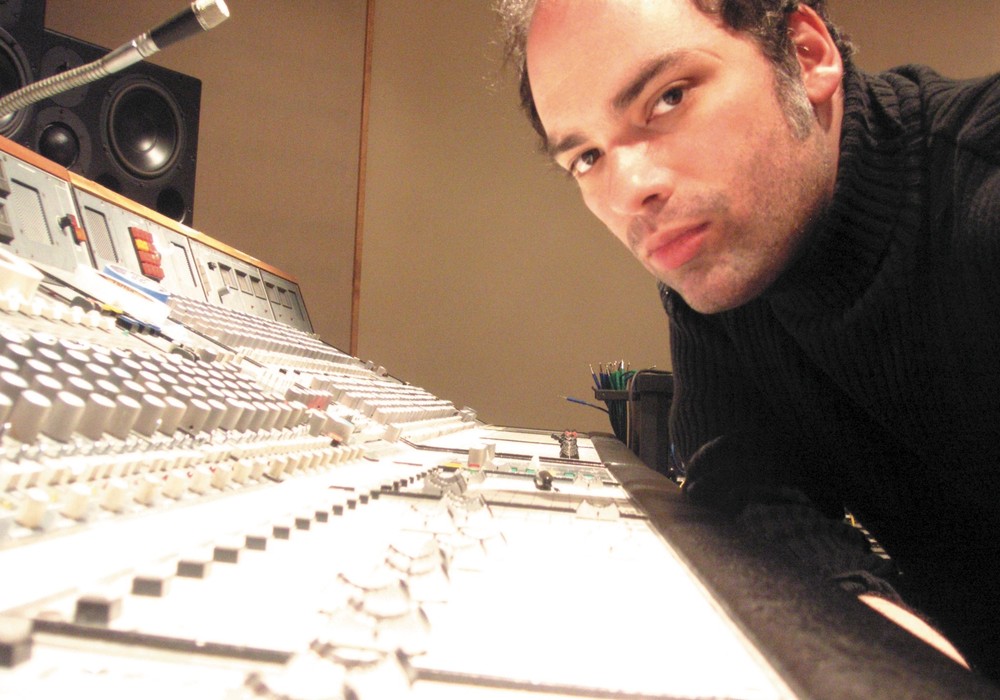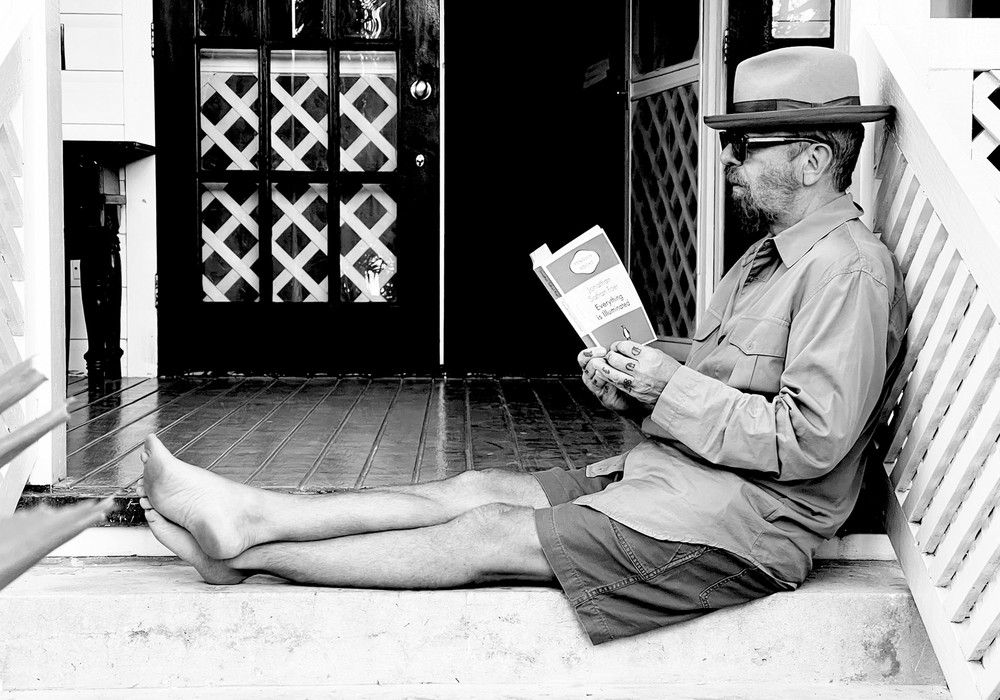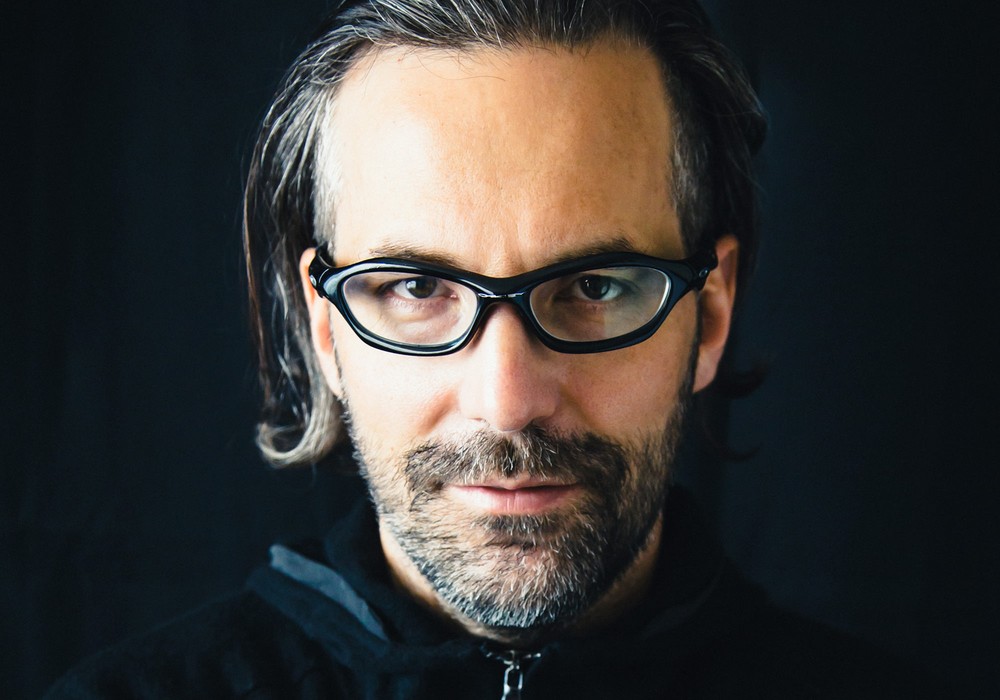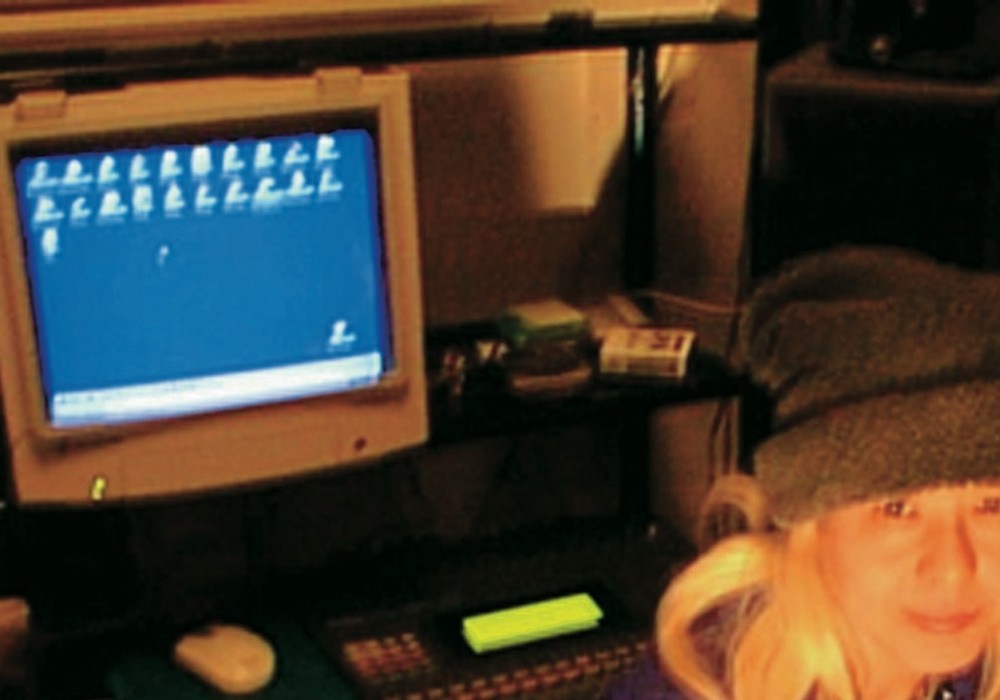The recording of my interview with Scott Hirsch begins with a swelling synth note that slowly decays into a repeating delay that gradually fades out. This abstract beginning flows well into our discussion about The Court & Spark's experimental and stylistically diverse new album, Hearts. For a band known for drawn-out recording processes, Hearts was recorded relatively quickly at Alabama Street Station, their home studio, and other recording studios in the San Francisco Bay Area. Hirsch was excited to describe and demonstrate the various techniques they used on Hearts, made immediately apparent the breadth and depth of his musical and recording knowledge.
Listening to a Court & Spark recording is a remarkable musical experience: whistles are mixed with trumpets and combine seamlessly with a harmonium and manipulated delays. But with all of this production they never forget the centrality of the song; the production is there to serve the song not the other way around. MC Taylor's lyrical wit is present throughout the album and their production helps accent his poetic imagery. Their influences range from the dubbed out experimentation of Lee Perry to rootsy J.J. Cale recordings from the early seventies. The simultaneously electronic and organic sounds of Krautrock legends Cluster and Harmonia can be heard as well. The Court & Spark continues their finely crafted approach to recording and song writing while expanding and further refining these techniques.
IN THE BEGINNING
It is clear that the hundreds of hours spent in recording studios around San Francisco have developed into a nuanced and organic recording approach. Their first three records were recorded with Scott Solter on entirely analog equipment. These recordings, while amazingly crafted, took years to complete, which led The Court & Spark to experiment with home recording on their EP Double Roses. Satisfied with their results, they decided to record Hearts on a combination of analog and digital equipment in the studio, at home and on location. They recorded in San Francisco at Closer Studios, and on location in divergent locales such as Los Gaviotas in Baja California, the Swedish American Hall in San Francisco, and at Alabama Street Station. Their new record is a testament to carefully studied classic analog recording techniques and the creative potential of new digital recording technologies.
LIVE, TO TAPE
The basic tracks for the songs that feature the full band were recorded at Closer Studios in San Francisco with the help of Sean Coleman. Closer Studios' Trident board and large live room enabled the band to play together, better capturing the sound and energy of a live performance. In describing their approach to recording basic tracks, Hirsch explains "The tracks that feature the band have all of us playing together, and they have tempo problems and things go up and down but the feeling was there. If you're not getting it right sessions can end up getting steered straight into the ground — when everybody's there, you're paying for a studio and you're not getting it. On this one, we said 'Let's make this one fun... we're just going to have a good time... we're just going to hang out for three or four days in this place... and we'll do it to tape. We made our goals really low, like four songs, that's it, and we rehearsed the shit out of them before and just went in and got the best sounds we could. The drums were mic'ed really simply. Just a kick, snare, two overheads, some auxiliary mics and a hallway mic. There was no isolation really... bleed is just everywhere."
Other tracks were started at their home studio using a simple acoustic guitar track and drum machine. The song "Smoke Snigals" began with Taylor's guitar riff played to a beat originating on a Rhythm Ace, then manipulated in ReCycle. Other tracks like "The Ballad of Horselover Fat" began with just an acoustic guitar and vocals. The Court & Spark wanted to match the way a song was recorded to the song's style or type. For example, a rock song was recorded more or less live as a rock band, while acoustic songs started with an acoustic guitar. This approach was used to avoid the homogenized sound that can occur when all of the songs on a recording are recorded using the same setup.
OVERDUBS IN THE BEDROOM
The majority of Hearts' overdubs were recorded at their home studio, Alabama Street Station, using minimal gear: an Ibanez AD202 delay, a Cinema Filter, a Focusrite TwinTrak Pro preamp, and Pro Tools. Occasionally they used an AT4040 microphone for close mic'ing acoustics but Hirsch adds "For the acoustic instruments we frequently used a vintage Telefunken/Schoepps 221 that Sean Coleman [who helped engineer some of the basic tracks on the Hearts] graciously left with us for months on end. We usually put it in cardioid, but the omni mode was awesome for more room sound. We had to be careful, because sometimes you could hear someone chewing on a burrito on the corner of our street when it was in omni."
Hearts features guest musicians for whom they sometimes had a specific part in mind and other times musicians were turned loose to see what they would come up with. Patrick Main (Paula Frazer, Oranger) and Trevor Garrod (Tea Leaf Green), two local pianists, both added their brilliant piano playing to Hearts. Hirsch and Taylor also invited touring musicians who they were performing with to add overdubs before or after the show. Singers Inara George and Jason Molina (Songs: Ohia and Magnolia Electric Co.) added backup vocals to songs on Hearts. Hirsch was away while recording Inara but Taylor worked with her to build the vocal harmonies on "The Ballad of Horse Lover Fat". "It was the first thing he [Taylor] ever recorded as engineer. Mike is really good at arranging harmonies."
On the track "Uptown Rulers", Steve Adams (ALO) played upright bass. "I recorded Steve and Mike playing together in my room, which was somewhat of a mistake, because even with a makeshift baffle, there was too much bleed between the acoustic guitar and the upright bass."
Hirsch's portable recording setup allowed The Court & Spark to travel remotely and capture overdubs that could not be recorded otherwise. Paul Hoaglin (Mother Hips) has a rare Mellotron that can't be moved so the band went to him and recorded the eccentric trumpet patch heard on the song "Smoke Snigals".
Living in San Francisco gives The Court & Spark access to a large musical community. "If you live in a city, you can always find someone that plays oboe for instance. You just have to pay a little money, but it's not usually much. Then you have an oboe on a song and it's so much cooler than using a sample — if they charge $50 they can play and it really adds to the song. And you get to meet people you would never have met and it's so much fun. You just have to know you need this certain sound."
Knowing when they need a certain sound and what sounds fit together is something that Taylor and Hirsch clearly excel at. In Hirsch's room hangs a diagram by one E. J. Quinby, which marks out the frequency range of different instruments. This poster (see Bob Katz's book Mastering Audio) is helpful in understanding the relationship between instruments, frequency and arrangement.
SAMPLING YOURSELF
On "Berliners" The Court & Spark sampled themselves from an earlier recording. They used a really simple beat of alternating bass drum and snare. "Originally it was James, but it was sampled... You don't notice it but that goes throughout the entire song." Then the chorus was layered with an interlocking percussion track of hoof shaker, bells and snare drum. After that a rhythmic guitar strum was added in time with the percussion track. "It creates this complex rhythm but it's not drums. It's so much easier to mix too — you just have three faders for your rhythm track."
The band was often inspired by accidental sounds that occurred while recording unrelated tracks. While recording an acoustic guitar that was being put through a Motion Sound amplifier (similar to a Leslie except it allows you to plug any source into it) on the song "The Ballad of Horselover Fat" Hirsch sampled the sound made by accidentally hitting the body of the guitar to construct a drum kit in Reason. Sampling their own sounds allowed them to keep the recording organic sounding while adding unique textures to the tracks. Reason has its own groove/feel that you can see in Pro Tools — a slight push and pull. This adds to the naturalistic feel on the tracks that use sequencing. The combination of acoustic instruments, organic samples and slightly loose feel allowed tracks that were produced using sequencing to still feel real. They also limited the amount of grid-based MIDI programming to small percussion accents.
Hearts features an eclectic combination of manipulated instruments. The Farfisa Compact organ, which Hirsch said was key to making the record, was sometimes distorted and phased. From hoof shakers to trumpet, they have a knack for incorporating a diverse range of sound into their own distinct style. Another unique instrument they used was the Harmonium (a small reed organ powered by a hand pumped bellows), at times put through a wah pedal.
For the songs that were built up, one track at a time, instead of using a click track (which can be hard to play to), they would create a simple beat in Reason. Sometimes, like on the song "The Ballad of Horselover Fat", the Reason beat ended up staying in the song but they changed the samples to sounds from their own recordings. Then they went back in and used Reason and Rexloops to add percussion fills that were also made using their own sounds.
In addition to Reason, they used Logic for some of the keyboard sounds. "The sounds are wonderful — the synths and there's a Rhodes simulator and there's a B3 simulator that are incredible sounding." The only problem was getting them to and from Pro Tools is not as easy since you can't use Rewire. So Hirsch would make a mix of the song, import it into Logic, play the part, export the keyboard track and import it into the Pro Tools session. "If we had an awesome B3, I would've obviously recorded that. But I was trying to beef it up before we mixed it... it's pretty buried in the mix but it adds a little B3 to the mix." On top of that they had Dan Lebowitz (ALO) play congas. "Because we were totally going for the Traffic vibe on this song," Hirsch says with a laugh.
The majority of the vocals for Hearts were recorded with a high-end signal chain they rented from Steve Jarvis, a long time member of the San Francisco Bay Area recording community. "We rented a U47, a tranformerless George Massenburg preamp and a high end limiter. The U47 is a Klaus Heyne modified version."
On the song "Capaldi" they were having trouble getting the guitars to sound heavy enough. "The more we tried to make the guitars heavier, the smaller the song sounded. Once we started to take things away it started to sound heavier. It really opened up the song." For distorted guitar parts they used the distortion created by a Jimi Hendrix inspired pedal going in direct. "It's called the Experience pedal or something," Hirsch says while shrugging his shoulders.
MIXING AT HYDE STREET STUDIOS
Hearts was mixed with Justin Phelps in Room C at the legendary Hyde Street Studios where bands as diverse as Blue Oyster Cult, The Dead Kennedys and The Grateful Dead have all recorded. Taking the project out of the computer and through a real mixing console and outboard gear in a good sounding mixing environment was a valuable stage in the process of making Hearts. For Hirsch, working with a separate mix engineer was helpful since he could hear their recording through a set of experienced ears. This sometimes meant reassuring Phelps that the noise and distortion he was hearing was intentional — at other times his critical listening was invaluable to improving the overall sound of the recording.
"The first thing Justin said when they brought in the recording was 'that's a really awful kick drum sound' — the mic might have fallen over — maybe it was the wrong mic or the wrong preamp. We were really worried we were in trouble, but Justin said 'Oh no, I'll just use Beat Replacer.'" Beat Replacer is a Pro Tools plug-in that allows you to keep the performance that was recorded but change the sound of the drum to a sample. You end up with two tracks, the original and the Beat Replacer track and then you are able to mix the two together. "It just sounds a little more solid on the low end. It didn't stop the song or the session and it's still James playing the drums. It's kind of cheating, but without a solid kick drum, the song would suffer."
Another aspect of the recording that Phelps scrutinized was the phase relationships of some of the tracks. On the song where he used Beat Replacer, Phelps corrected the phase between the two bass drum tracks and the kick sound was tightened up considerably. Justin also checked the bass mic and DI to make sure the phase was correct between those two tracks. "Since phase is never 180º off, it's a relationship and you can tighten that up by shifting one track a few milliseconds."
For the vinyl release of Hearts, Camera Records will offer a bonus downloadable track, "No Hex", a song that didn't make it onto the CD release and would not fit on the vinyl. After finishing the mixing of the album, they went back to Phelps to mix "No Hex". The vocals on it were sent through a secret method Phelps devised by abusing Dolby Noise Reduction encoding in order to give Taylor's vocals an upfront, compressed, sandpaper-like sound.
Mastering With Doug Sax
"Justin has made a lot of records so he had a lot of suggestions for mastering. The one guy that he kept saying he was really amazed by was Doug Sax." Then as if guided by divine psychedelic intervention, their decision was made for them. "Ironically we were mixing and listening, as reference, a lot to Obscured by Clouds [Pink Floyd's 1972 soundtrack to the art film La Vallee] and then we opened it and we were like 'Oh Doug Sax mastered this' and Justin says, 'Oh that's it, you have to go there.'"
"We wanted to go big... from low end to high end." Hirsch adds when describing why they wanted to go to a high-end mastering facility. "We financed the entire mixing and recording ourselves. So we asked Cory from our label Absolutely Kosher if we could master at a really high-end place — we thought that it would really help the record out. Since it didn't go though the most pristine signal chain the whole time — it came from tape and digital — all these different sources."
It was important to the Court & Spark for find a sympathetic ear for their music. "That was the main thing. We wanted to get someone who knows how to deal with this kind of music. It's not a normal thing — it's not a folk thing, it's not a country singer/songwriter thing. That's a totally different style — that means they're going to put the vocal way out front and deal with the instruments in a gentle way. We had Witch Season and Dead Diamond River mastered by these guys in L.A. that master stuff like Snoop Dog records for radio. They were cool, but they definitely didn't have any idea about our music. It's really hard to find someone who can approach our music from the right perspective. And we thought, 'Well what better person to understand our music then some guy who's done a lot of Pink Floyd records.' It's not that we sound a lot like Pink Floyd — the intention is weird, but sonic and kind of edgy."
They contacted Doug Sax and conducted an initial interview with him. He was excited about the project but had a few questions for them. "Sax asked, 'You didn't put an L1 across the master fader?' and we said, 'No, we know not to do that.' And he replied, 'Good, because if anybody is going to mess it up, you'll just have to let me do it.'"
To make sure they were properly prepared, the band took two track mixes of the whole album, along with the standard 'vocal up' and 'vocal down' mixes for each track. "But by that point we were pretty sure about all of the mixes" Hirsch adds.
After The Court & Spark set up their mastering appointment Hirsch and Taylor drove down the 101 to Doug Sax's new mastering facility in Ojai, California. His new room had just been photographed for Mix Magazine the day before and was impressive. They were initially confused by Sax: "I think he was just purposely putting us on. Because we got there and he's like, 'Okay, okay, guys, you have to listen to this'. And he puts in this CD and it's the first time we had heard these speakers, and he puts it up really loud and it starts out, and it sounds like Dark Side of the Moon, but it sounded different. And it turns out it's this a cappella vocal group doing Dark Side of the Moon! And he let it play forever and he kept saying 'isn't this awesome?'"
After listening for a while they started talking with him about what they wanted to do with the mastering of their record. "So we told him 'We really picked you to master because we were listening to this record a lot...'" So they brought out their copy of Obscured by Clouds and began to describe to Sax their connection to the record "'This was the intent of some of the mixes, to get this sound. The whole record has this sound to it — it has almost a film — a filter — that just sounds a certain way' and he says 'What is this?' 'Did I work on this?' 'I don't remember this.' He says 'give me my glasses'. And he starts examining the record and he says 'What year is this?' and we said 'like, '73' and we put it on and then he says 'Oh yeah — okay, I think I remember this.'" "After that he started warming up."
"His tools are so minimal, he doesn't even touch the computer — he has an assistant doing all that stuff. And he has this custom-made limiter and EQ and excellent converters. He didn't even put any limiting on the first song" In fact, Doug Sax's approach seemed so minimal that Hirsch wasn't really sure what exactly he was doing except that it sounded great. "It seemed overly simple, but I know what he was listening for was pretty complex." Hirsch imitated Doug Sax turning the knobs and added, "All of a sudden the bass totally tightened up. We asked him to do something about the snare drum — it was kind of poking out — and he just did a couple of things and all the sudden it all just sat together."
During the mastering process Doug spoke to them about working with contemporary mixes. "He was saying Hearts was a real challenge for him — these days, where you have Pro Tools mixes where everything can be tweaked to the 100th degree. He gets mixes that don't require any fixing or mastering. He basically has to reformat them and limit them a tiny bit and it's done."
Doug Sax also talked to them about the recordings he encountered in the early days and how his career in mastering began. "He said when he started, and the reason he invented the tools that he has — that he still uses from 1967 is that there was no automation and the monitors were so bad that he'd get mixes that were unbelievably atrocious — a sax solo that would be so much louder and the vocals, you couldn't hear them and he had to develop these tools where he could completely fix a mix in the two-track mastering. He said for 25 years he worked on the top 15 records on the charts all the time. And he had people working in shifts — night shifts and day shifts — just mastering a million records."
Doug Sax was such a gracious host that he took them out to an extended lunch in Ojai. "While we were at lunch he said 'Let me call James Guthrie' [Guthrie mixed Pink Floyd's The Wall and Obscured by Clouds and other Floyd albums and also recently, along with Doug Sax, re-mastered Pink Floyd's entire catalog] 'I got these guys here who say they really want their records to sound like Obscured by Clouds. Did you mix that? What did we do?' It was a rewarding experience and the end result sounds so, so good."
WHAT'S NEXT?
Dub — the next record will be a self released "Dub" record — instrumental mixes of songs from their current and previous albums, along with some new compositions. "The Dub record is going to be more Kraut than Dub." Several of the songs on this record were done with Scott Solter entirely on tape. "We just kept splicing the tape to make these loops. So the drumbeat would stay the same but then we'd splice in a different loop on top of it. So the processing is all different. Then we did a track that is slowed-down tape. It sounds like Apollo [Brian Eno's 1983 album]."
"We want to put it out as a tour only thing... it doesn't have songs really" Hirsch explains. By selling them as limited, self-released CDs it helps finance their tour while on the road. "That's what we did with that other record [Double Roses]. We did two printings of 400 and we're almost out of them."
FINAL WORDS
Hirsch not only plays in The Court & Spark and engineers their recordings he also teaches recording at Pyramind Media and Music Production School and BAVC [Bay Area Video Coalition, a nonprofit post-production and teaching facility in San Francisco]. In talking about how we both learned recording on analog equipment we agreed that it really helped in learning how to properly use Pro Tools (and other audio software). "Once you learn on analog recording gear it helps your understanding of everything and everything makes sense. Especially Pro Tools, it's based on an analog console — this is an analog board basically and it's just in digital form. And if you realize that all of this exists — buses, and sends, and aux's on any console... it totally makes sense."
"People are afraid of that stuff, and they hear the word 'frequency' and their mind shuts off.' But if you actually explain it, like 'This is this and this is that' really simply, they're like 'oh.' At BAVC we get these kids and they're just like 'Yo, I want to make a hip-hop record' and I always make fun of people because they get all bummed out when you start talking scientifically. I tell them... 'You want to make hip-hop records? If you learn this stuff — because Dr. Dre knows it — you think it's funny, but you have to learn what frequencies are and you have to learn about amplitude and phase relationships and then you can talk about a bass being 'phat'. If you say 'I want to make the bass phat' and you don't know how to make it 'phat', EQ and compression wise, then you're full of it. It's so cool, some people actually get that... and they really find their way in my class.' If you actually understand the fundamentals of what these computer images are representing it makes so much difference in how people do and it's just really cool to see — when you open peoples minds to that — all the sudden they're empowered." r
www.thecourtandspark.com
www.scotthirschsound.com
Jason Warriner is an artist/musician/designer living in Oakland CA. and helps run the micro record label Pro.Con (dreamchimney.com/procon), along with doing graphic design (jaywar.com).


